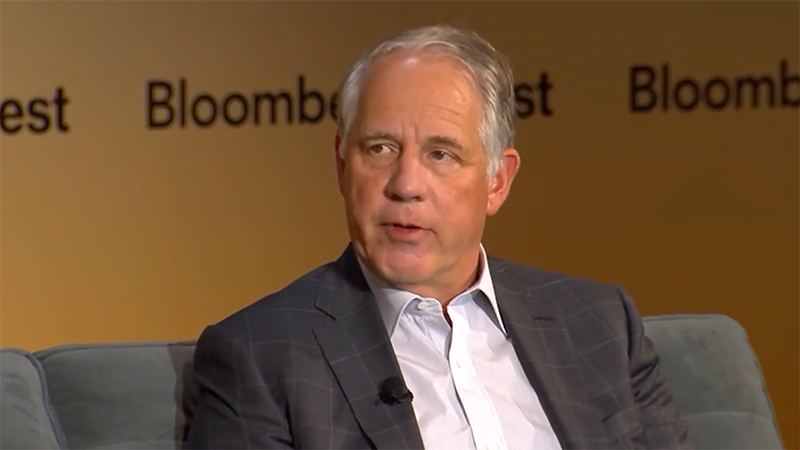June 15, 2022
Is It Finally Time to Be Overweight Credit Again?

As we approach the mid-point of the year, it is an opportune time to take stock on the current market environment.
As we approach the mid-point of the year, we thought it was an opportune time to take stock on the current market environment. During the first five months of 2022, we have witnessed widespread value destruction—most acutely in equities, where many major indices are down 10% to 20% year-to-date.1 The specter of entrenched and elevated inflation expectations has forced the hand of central banks (including the Federal Reserve) around the globe. After more than a decade of easy monetary conditions, US monetary policy has turned decidedly restrictive. So far, this monetary tightening has had limited impact on the real economy, but we think this is about to change. Over the next six to 12 months, we believe we will see a significant slowdown in economic activity. Already, consumers, who are facing higher borrowing costs and rising prices for basic necessities, are showing signs of fatigue. We believe business activity will follow, as an uncertain economic outlook and higher capital costs lead to layoffs, reduced capital expenditures and, ultimately, rising corporate default rates. Importantly, the reflexivity of economic activity raises the risk that these recessionary trends can compound and amplify each other, accelerating and deepening the onset and depth of a potential slowdown.
Heightened equity volatility and tightening financial conditions are penetrating the broader capital markets, creating opportunities to capitalize on the resultant dislocation. For more than a decade, many investors have under-allocated to credit given persistently low interest rates. We think the current market environment is changing this situation. We expect that the next 18 months will likely be an attractive environment for credit selection, particularly for those investors who can provide capital dynamically and at scale. As rates rise and spreads widen, we think credit is going to be the most attractive risk-reward trade relative to other asset classes, especially equities. Specifically, we see opportunities in four separate parts of the credit universe: in growth and technology “transition,” in the capital markets, in private credit, and in secondary markets.
Growth & Tech Transition
For a decade, “growth at all costs” or “blitzscaling” has been a favored approach among tech startups, large and small. Many larger tech unicorns eventually graduated to the public equity markets in the 2010s through blockbuster IPOs. However, this transition in ownership did little to shift the emphasis away from growth toward profitability. Of the many changes brought about by the market volatility over the past six months, at least one is undeniable: growth has fallen out of favor. The market is now punishing, sometimes unfairly, high-growth, money-losing companies, many of which are great businesses with huge addressable markets. In the last six months, growth equity valuations have, on average, been repriced from 10 to 20 times revenue to 5 times or less. 2 With capital markets in turmoil, there is newfound urgency among growth companies to transition their business models toward sustainable profitability. As they pivot their business models, they are simultaneously contending with falling valuations, growing cash burn, and constrained capital markets access.
The current predicament facing many of these companies is simply a function of market forces. As revenue multiples expanded during the pandemic, management teams responded by doubling-down on growth through capacity additions, strategic M&A, and aggressive customer acquisition, which led to swelling operating expenses. The solution to this problem is straightforward—cut costs and do it aggressively. Already we have seen hiring freezes and cost cutting programs announced by many growth-oriented technology companies. These moves, although painful, will be a credit positive, in our view.
Falling equity valuations also create operational challenges for many of these companies, even those with no debt. Stock-based compensation is a key hiring and retention tool for high growth enterprises. Avoiding a “down-round” or dilutive equity raise is an important consideration. We think this dynamic creates an opportunity for capital providers who can structure hybrid debt and equity solutions that minimize dilution while providing downside mitigation for investors (due to the lack of existing debt) with low loan-to-values. We believe opportunities for structured capital solutions will be plentiful, especially for capital providers that can also offer operating support.
Capital Markets
While 2021 experienced strong issuance and capital market activity, year-to-date high yield and leverage loan issuance has been anemic at best. Banks in the US and Europe have syndicated very few of their previously-committed-to underwritten deals, contributing to a considerable backlog across major banks. Absent a material rebound in the market, we expect this will result in hung financings and, in turn, opportunities for those investors who can provide liquidity to the underwriting banks. We estimate there is nearly $100 billion across 30 deals currently sitting on banks’ balance sheets. We expect that these deals will need to be funded over the next two to three months. For certain high-quality names, this should translate into an attractive opportunity set.
Private Credit
As syndicated markets show increased signs of stress, we have seen growth in demand for private credit. Even if the syndicated markets can absorb the $100 billion in commitments already in the pipeline (not to mention any new commitments), the depth of the market for new capital is shallower by the day. Softening demand from collateralized debt obligations (CLOs) and an inability to syndicate in the loan market is constraining access to capital. That has resulted in significant opportunities for providers of private credit, especially for senior parts of the capital structure of companies that need to raise capital in the second half of 2022. Excess spreads in the private credit markets have been repriced between 200 to 300 basis points as of this writing, 3 but we believe there is still room for further widening. Lenders that can offer bespoke solutions with certainty of execution, in our view, will have plenty of opportunities to deploy capital over the next six to nine months at meaningful excess spreads.
Secondary Markets
The turmoil in credit markets is not limited to primary debt markets. In the secondary markets, spreads have recently widened substantially to 150 basis points on investment-grade bonds, and much higher in high yield (~480bps), leveraged loans (~470bps), CLOs (~300bps), and CMBS (~300-400bp).4
But the process is not over: while the recent spread widening has been substantial, we expect it to continue, and believe high yield spreads could reach 600 to 700 basis points over the next several months as the credit markets catch up to the equity markets. Credit markets, which under normal conditions are generally liquid, can gap lower with meaningful illiquidity during periods of stress. We think investors who can provide liquidity during these moments of dislocation will have significant deployment opportunities in the months ahead, with the structured market in particular offering attractive opportunities.
We believe that Apollo—with $360 billion in assets under management5 across its credit platform—is well positioned to lean into the opportunities we are seeing across these four themes.
1 Source: Bloomberg. As measured by the performance of the S&P Index and NASDAQ Composite benchmarks as of June 3, 2022.
2 Source: Bloomberg as of May 31, 2022.
3 Source: Bloomberg, as of May 2022. Reflects the views and opinions of Apollo Analysts. Subject to change.
4 Source: Bloomberg/JPM as of May 2022. Reflects the views and opinions of Apollo Analysts. Subject to change.
5 As of December 31, 2021.
Tags
This material has been prepared for informational purposes only may not be distributed, copied, published or reproduced without the express consent of Apollo Global Management, Inc. or any of its subsidiaries (“Apollo”). The views and opinions herein should not be construed as investment, accounting, legal or tax advice. This material does not constitute an offer to sell, or the solicitation of an offer to buy, any security, product or service, including interest in any investment product or fund or account managed or advised by Apollo. Information contained herein represents Apollo's views and were based on certain assumptions as of the date the article was published. These views are subject to change and may change materially. While Apollo believes such assumptions to be reasonable under the circumstances as of the date of the published, there can be no guarantee that such assumptions are reasonable or that any conclusions based on such assumptions will occur. In addition, assumptions upon which certain of Apollo’s views were based may have materially changed since the time such views were formulated. There can be no assurance that Apollo’s views described herein will continue to be accurate.
Certain statements made throughout this material (including those relating to forecasts, estimates, current and future market conditions and trends in respect thereof) that are not historical facts are based on current expectations, estimates, opinions and/or beliefs of Apollo. Such statements involve known and unknown risks, uncertainties and other factors, and undue reliance should not be placed thereon. Certain information contained herein may be “forward-looking” in nature. Due to various risks and uncertainties, actual events or results or the actual performance of an investment or class of securities may differ materially from those reflected or contemplated in such forward-looking information. As such, undue reliance should not be placed on such information. Forward-looking statements may be identified by the use of terminology including, but not limited to, “may”, “will”, “should”, “expect”, “anticipate”, “target”, “project”, “estimate”, “intend”, “continue” or “believe” or the negatives thereof or other variations thereon or comparable terminology. When relying on forward-looking statements to make decisions, investors should carefully consider the aforementioned factors as well as other uncertainties and events.
Apollo makes no representation or warranty, expressed or implied, with respect to the fairness, correctness, accuracy, reasonableness, or completeness of any of the information contained herein (including but not limited to information obtained from third parties unrelated to Apollo), and it expressly disclaims any responsibility or liability.









